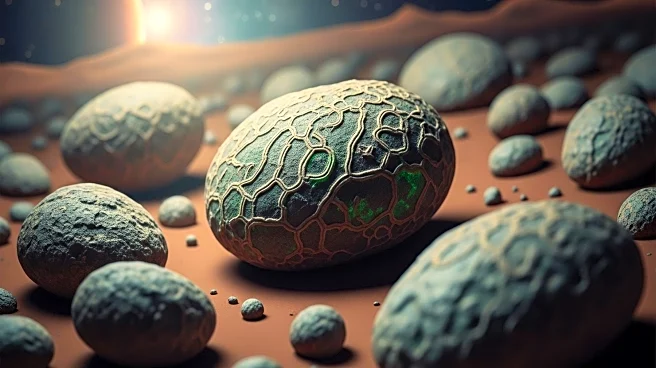What is the story about?
What's Happening?
NASA's Perseverance Mars rover has discovered rocks in a dry river channel that may contain potential signs of ancient microscopic life. The rover, which has been exploring Mars since 2021, cannot directly detect life but collects samples from areas deemed suitable for hosting life billions of years ago. These samples are awaiting retrieval to Earth for in-depth analysis. Scientists have identified organic carbon and chemical compounds in the samples that could be byproducts of microbial activity. However, non-biological processes could also explain these findings, and further analysis is needed to confirm the presence of ancient life.
Why It's Important?
The discovery is significant as it represents the most compelling candidate yet in the search for ancient life on Mars. If confirmed, it would provide evidence of life beyond Earth, potentially reshaping our understanding of the universe and the history of life. The findings could also influence future Mars exploration missions and the development of technologies for sample retrieval and analysis. The research highlights the complexity of identifying biosignatures and the need for advanced scientific methods to distinguish between biological and non-biological processes.
What's Next?
NASA's plan to retrieve the samples from Mars is currently on hold due to budget constraints, with the timeline for return slipping into the 2040s. Until then, scientists will rely on Earth-based experiments to evaluate the feasibility of ancient Martian life. The ongoing research will continue to explore the potential for life on Mars and inform future missions aimed at bringing samples back to Earth for detailed study.
AI Generated Content
Do you find this article useful?
















